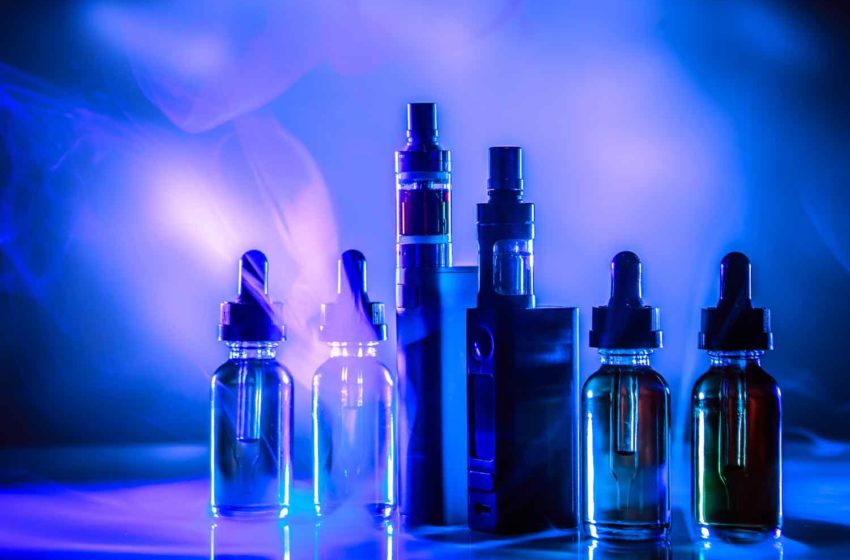Reality Check
- Cheryl Olson Print Edition
- December 1, 2022
- 0
- 11 minutes read


To what extent do flavor bans achieve their stated objectives?
By Cheryl K. Olson
As a California resident, I set aside an evening before every state election to educate myself about that year’s crop of “propositions”—proposed policies that have gathered enough signatures from registered voters to place on the ballot. This year’s motley assortment addressed kidney dialysis centers, arts and music education, online gambling … and flavored tobacco products. The brief text on my ballot stated that a “yes” vote would approve a stalled 2020 law prohibiting retail sale of certain flavored tobacco products. And this would decrease state tobacco tax revenues as much as $100 million per year.
The California ban includes all flavored tobacco products (aside from premium cigars, loose leaf tobacco and certain hookah tobacco) as well as flavor enhancers designed to be added to tobacco products. Bans of flavored vaping products are now in effect in states such as Massachusetts, New Jersey and Rhode Island. New York bans both flavors and online sales (five states ban online sales but not flavors). Various cities and counties, including Chicago and Boulder, Colorado, also forbid flavors.
This led me to wonder about the purpose of laws prohibiting flavors in various types of nicotine products. Are flavor bans a useful way to achieve tobacco policy goals? And what unintended consequences might result?
Why the Focus on Flavors?
Despite questionable evidence, it’s now dogma that flavored tobacco products addict youth and are a slippery slope to smoking. “The ban on flavored nicotine vapor products will protect our children, who, thanks to the tobacco industry’s marketing efforts, have been using vaping products at alarming rates,” said New York state’s commissioner of health in May 2020. “We will no longer permit Big Tobacco to target young New Yorkers for a lifetime of nicotine addiction.”
“Flavors are complicated. They are initiation products for new users, no question,” says Dave Dobbins, former chief operating officer of the Truth Initiative. “We see this play out in alcohol as well. Kids start with flavored seltzers. We tolerate this because adults like flavored alcohol also.”
“That said, nicotine can be dependence inducing, and youth initiation is a serious issue,” he adds. “But, if we expect adults to switch, measures that reduce combustible appeal (no flavored cigars or cigarettes) and increase the appeal of safer products (flavored nicotine pouches) will be important.”
A nicotine researcher who has worked in academia and industry (and asked for anonymity) notes, “Just because most youth use flavors doesn’t mean they need flavors to experiment. They didn’t need flavors to experiment with cigarettes 20 years ago.”
Unintended Consequences of Flavor Bans
What do we know so far about the effects of flavored product sales restrictions? There are hints in a recent scoping review by Todd Rogers and colleagues at RTI International and the Truth Initiative Schroeder Institute. They looked at studies of local U.S. policies, most passed in 2015–2019. Research designs and measures were generally weak, and there were many gaps. None of the studies gave evidence on whether flavor bans reduced youth access to or susceptibility to use tobacco products, for example.
The authors did find post-policy short-term reductions in flavored product sales but little assurance that these would be sustained. Most of the studies looked at unintended effects. There was evidence of cross-border sales and substituting other products rather than quitting. There were also creative workarounds as when large numbers of New York City retailers began selling “noncigarette products with concept flavor descriptors” such as “purple” instead of “grape.”
Three included studies that measured policy success via scanner sales data found “significant, sustained levels of sales of restricted products in policy-affected areas.” The review’s authors piled on the pessimism by noting that retail scanner data leave out online sales, sales from specialty vape and tobacco stores, out-of-town purchases and “illicit sources.”
The upshot? Rather than express skepticism of flavor bans, the review authors doubled down. They encouraged larger scale (state or national) bans because “these governments typically have more resources … to defend and enforce policies and measure outcomes.”
A new survey and interview-based study looked at how young adult e-cigarette users in six major cities responded to the combined effects of 2020 federal restrictions on flavored cartridge-based vapes and state/local flavor bans. Very few (one in 12) reduced e-cigarette use. They went to alternative providers (including online) or used menthol/tobacco flavors. Faced with further restrictions, some intended to switch to cigarettes.
Recent studies of flavor bans have found preliminary evidence linking bans to increased cigarette use among young adults and high school students. Any reversal in the longstanding downward trend away from smoking is cause for concern.
In short, there’s little evidence thus far that bans achieve their stated goals. And unintended effects are potentially serious. One cynical but supportable conclusion: Tax Foundation researcher Ulrik Boesen called the Massachusetts ban on flavored e-liquids and menthol cigarettes “a public health measure that merely sends tax revenue to its neighboring states without improving public health.”
Alternatives to Flavor Bans
Atakan Erik Befrits, chief operating officer of the International Network of Nicotine Consumer Organizations, notes growing international interest in flavor bans as a means to protect children. He fears that the European Union and World Health Organization may have “painted themselves into a corner” with their current negative stances and find it difficult to change course. This would leave nicotine users, including those in low-income and middle-income countries, “with only the most dangerous delivery devices and the worst possible (if any) harm reduction alternatives to cigarettes for the 15–25 extra years that it will take for the natural experiment to run its course and become self-evident.”
Are there policies that meaningfully target youth tobacco use without torpedoing reduced-harm options for adults who smoke? Dobbins favors policies, such as the recent raise in the age of sale, and using technology and volume purchase limits to reduce youth access. He also supports prohibitions on “lifestyle” marketing, such as desktop DJ parties.
“After all, nobody will ever try an unflavored nicotine pouch, and few will switch if tobacco is the only option,” he says. “In the end, a balanced approach is the most sensible. I hope we get there.”
Adapting to Tobacco Flavor Bans
What do people who quit smoking with reduced-risk products do when flavors are banned? Members of the Consumer Advocates for Smoke-Free Alternatives Association (CASAA) were asked, “If you live in a state where flavors are banned, how has that affected your ability to stay smoke-free?” Examples below are representative of dozens of emailed responses.
When flavor bans shuttered trusted local vape shops, many former smokers felt adrift. “There was a store with a very knowledgeable owner who answered all of my questions. Unfortunately, because of the ban in New York, he was forced to close,” said Melanie. “The options were scary at best because you never knew if what you were getting was safe. I am still vaping and have found reputable places to get my products.”
To those former smokers used to buying products online, local flavor bans can be irrelevant. “I learned most of my information about vaping on various YouTube channels,” said Dave. “I think flavors are banned in my state/county, but I mix my own liquids, so the bans do not affect me.”
Many who responded get their products across borders, in person or via family. “The New Yorkers that refused to go back to smoking either started to DIY [do it yourself], went out of state, found an online store that still ships to N.Y., or go to a Native American reservation for their flavored e-liquid,” said Dale.
“I’m close enough to Connecticut to be able to get flavors there,” noted Rolf. “Without that, I think I would’ve returned to smoking.”
“My fiance has a daughter who lives in North Carolina, so I usually make a big juice order and have it delivered to her” for drop-off when she visits New York, reported Roger. “I do not know what I would do if I did not have the ability to get the juice. My favs are black licorice, almond and bubble gum.”
The extra effort required raises the costs of vaping, reducing its appeal versus smoking. “I can no longer afford to buy my favorite juice anymore. What was once a relatively cheap hobby has become too high priced,” said Zack from California. “I’m not going to lie; I’ve slipped up a few times since the flavor laws and nicotine taxes went into effect and found myself having a cigarette when socializing with friends.”
Calling flavor bans “nonsensical,” Rob in California blamed “our government [that] can’t enforce the age barrier to buy these products” and block “teenagers looking for kicks.” He has written repeatedly to his representatives in Congress and the California state legislature to educate them about vaping and “let them know that if vaping is ever banned or flavors we need are banned, I will have to seriously consider going back to cigarettes.”
“The flavor ban has been devastating. It feels like some states want the people to go back to cigarettes to recover some of that lost [Master Settlement Agreement] money,” said a former smoker who requested anonymity. “With that said, I’m still able to get flavored liquid. It just has to be done in a different way that I’m not going to outline here for obvious reasons.”
“The flavor ban has not affected me much; I want my vape to taste like an authentic tobacco vape,” said Marc. However, “the ban has hindered what was an alleged battle against the dangers of cigarettes. All the vape ban did was pull Big Tobacco up off the canvas after a KO a few years ago.”

